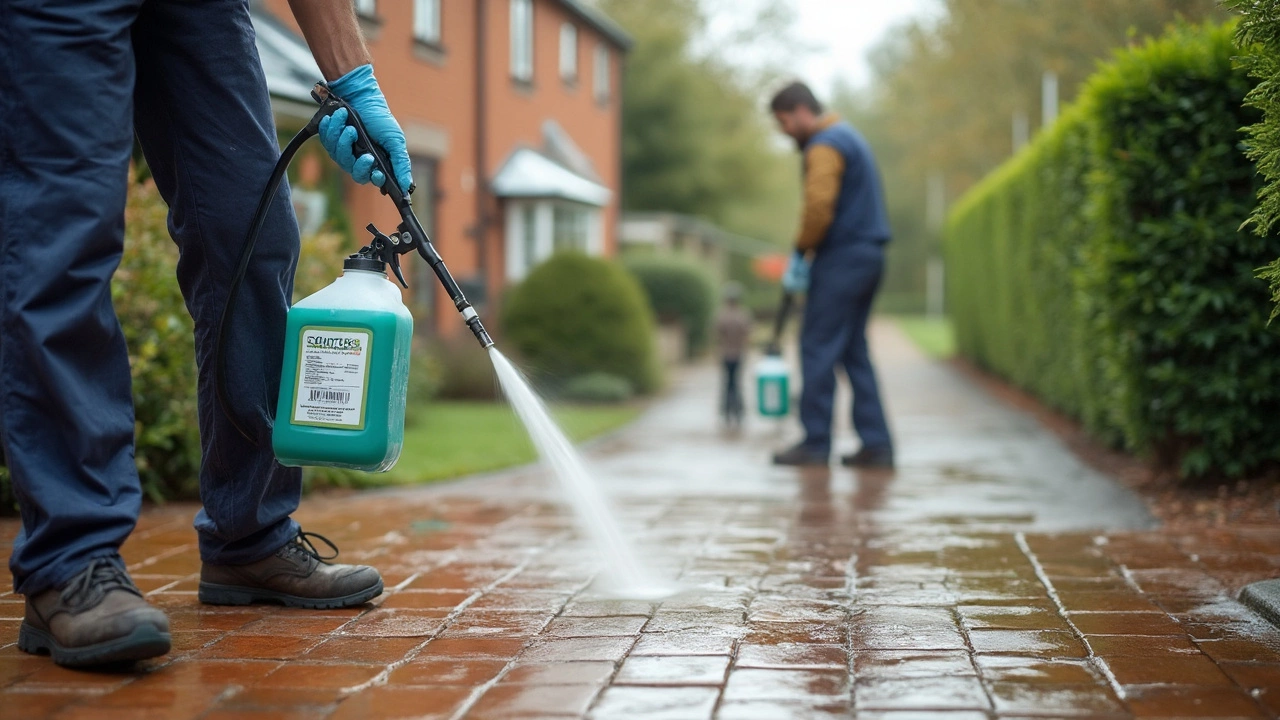Power Washing Solutions: What Works Best for a Clean Home Exterior
If you’ve ever stared at grime on your siding or stubborn mold on your driveway, you know a good power wash can feel like magic. But the right approach matters – too much pressure can damage brick, too little won’t lift dirt. Below you’ll find straightforward advice to get great results without breaking the bank.
How Long Does a Full House Power Wash Take?
Most homeowners finish a standard two‑story house in 2‑4 hours. The exact time depends on surface type, how dirty the area is, and whether you’re using a pump‑up or electric unit. Wooden decks usually need extra care, so plan an extra half hour for each deck you clean. If you’re tackling a large garden wall or a commercial façade, add another hour or two.
Speed comes from preparation. Move furniture, cover plants, and sweep off loose debris before you fire up the machine. A clean workspace means you won’t have to backtrack, and you’ll avoid accidental damage.
Can Power Washing Remove Mold Effectively?
Yes – a high‑pressure stream can blast away surface mold on concrete, brick, and siding. The key is the right detergent. Look for a EPA‑approved mold‑removing concentrate, mix it according to the label, and let it sit for 5‑10 minutes before rinsing. This gives the chemicals time to break down the spores.
For porous materials like wood, pressure alone can push mold deeper. In those cases, combine a low‑pressure wash with a soft‑brush scrub and a mold‑killing solution. Rinse thoroughly and let the wood dry completely to prevent regrowth.
Beware of wind‑blown spores. After a mold‑heavy job, wear a mask and close nearby windows until the area dries.
When you’re not sure which nozzle to use, start with a 25‑degree tip for general cleaning. Switch to a 15‑degree tip for stubborn grease or paint removal, but keep the distance of about 12‑18 inches from the surface to avoid etching.
DIY power washing can save money, but certain jobs are better left to pros. If you have delicate stone, historic brick, or extensive paint stripping, a professional can adjust pressure and use specialized chemicals safely.
Finally, always check local regulations. Some areas restrict water runoff or require you to use biodegradable cleaners. Following the rules keeps neighbors happy and protects the environment.
With these simple steps – timing, proper detergent, and the right nozzle – you’ll get a sparkling exterior without costly repairs. Give your home a fresh look, boost curb appeal, and keep mold at bay the easy way.

What Solution Do Professional Power Washers Use? The Real Secrets Behind Their Shine
Ever wonder what the pros actually spray on driveways and decks before blasting away the grime? This article dives into the real solutions professionals use—not just water, but a mix of cleaners and techniques that actually work. Find out why some pros pick bleach-based solutions and why others go green, plus smart tips for different surfaces. You’ll get the facts on what to avoid so you don’t ruin your siding or stain your patio. Learn how to choose the right cleaner for your next job and understand how the best in the business keep things spotless.
Read More